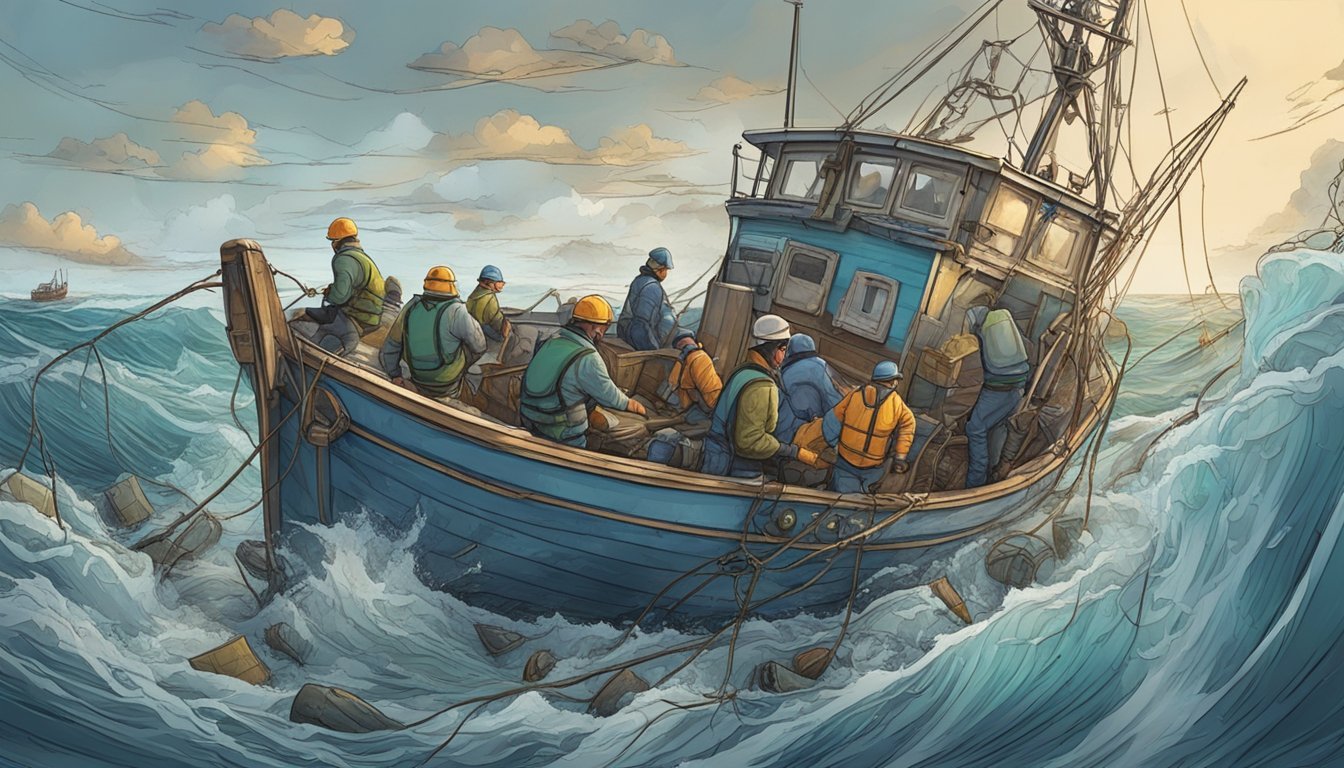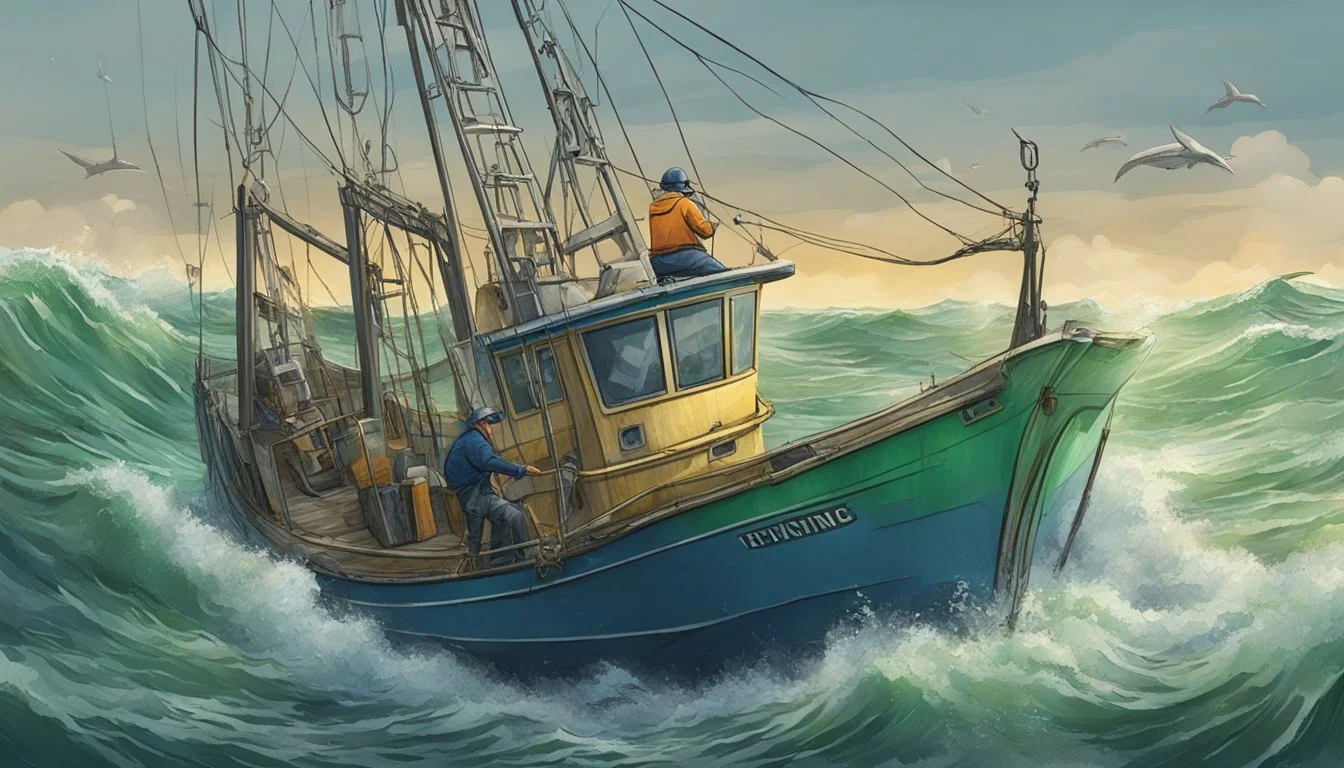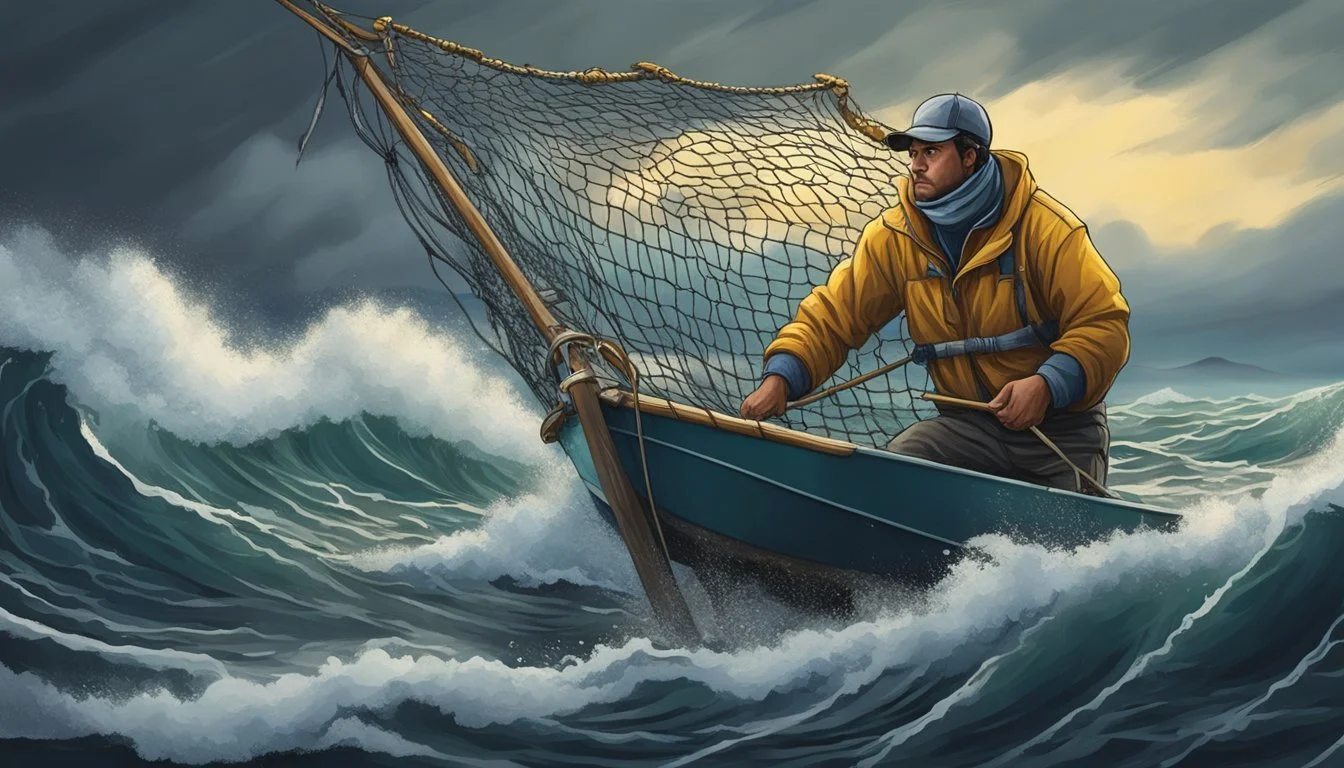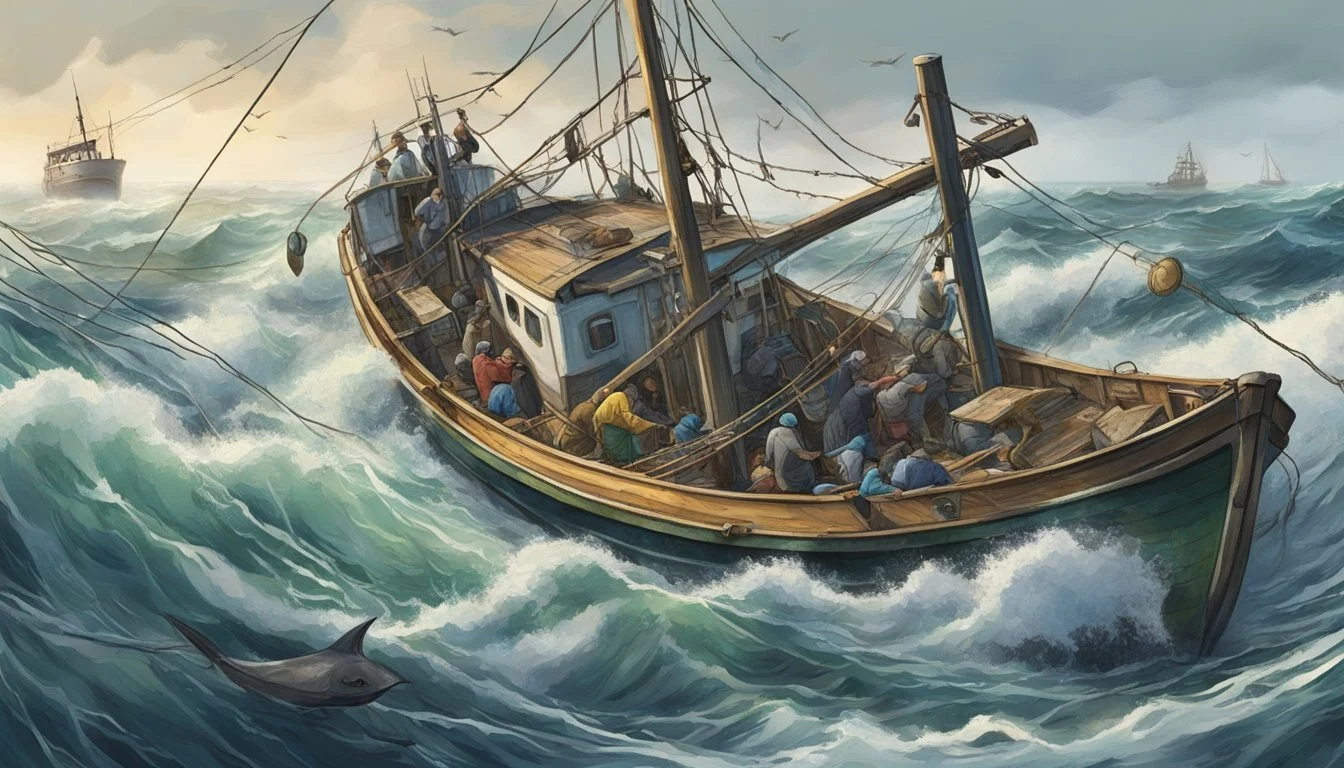Deadliest Catch's Most Memorable Rookie Mistakes
Costly Blunders on the Bering Sea
Reality TV has captivated audiences for years, and few shows have as much grit and danger as "Deadliest Catch." Set in the treacherous waters of the Bering Sea, this series follows crab fishing crews as they battle harsh conditions and high stakes. Rookie mistakes on "Deadliest Catch" can lead to life-threatening situations, equipment damage, and financial losses for the entire crew.
Newcomers to the fishing industry face a steep learning curve when they step onto a crab boat. From mishandling heavy machinery to misjudging weather conditions, these errors can have serious consequences. The show has documented numerous instances of greenhorns struggling to adapt to the demanding and unforgiving environment of commercial fishing in Alaska.
Some of the most memorable rookie mistakes on "Deadliest Catch" include dropping crab pots incorrectly, misreading navigation equipment, and failing to secure loose items on deck during rough seas. These errors not only put the individual at risk but can jeopardize the entire operation, highlighting the importance of experience and teamwork in this dangerous profession.
The Harsh Realities of Crab Fishing
Crab fishing in the Bering Sea is one of the most perilous occupations in the world. It demands exceptional skill, unwavering determination, and a willingness to face extreme conditions.
Navigating the Bering Sea
The Bering Sea is notorious for its treacherous waters and unpredictable weather. Massive waves, freezing temperatures, and icy decks create a constant threat to crew safety.
Visibility can drop to near zero during storms, making navigation extremely challenging. Experienced captains rely on advanced radar systems and years of knowledge to guide their vessels safely.
Icing is a major concern. Sea spray can quickly freeze on deck and equipment, adding dangerous weight to the boat. Crews must constantly battle ice buildup to prevent capsizing.
Understanding Commercial Fishing
Commercial crab fishing is a high-stakes industry driven by tight quotas and short seasons. Crews work around the clock in shifts that can last up to 20 hours.
The physical demands are intense. Fishermen haul heavy crab pots weighing up to 800 pounds in rough seas. Sleep deprivation and exhaustion are constant challenges.
Financial risks are significant. Boat owners invest millions in vessels and equipment. A poor season or major accident can be financially devastating.
Success requires a deep understanding of crab behavior, fishing regulations, and market dynamics. Captains must make crucial decisions about where and when to fish.
Recognizing Dangerous Jobs
Crab fishing consistently ranks as one of the most dangerous jobs in the United States. The fatality rate for Alaskan crab fishermen is about 80 times the national average for all occupations.
Common hazards include:
Falling overboard in frigid waters
Injuries from heavy equipment
Hypothermia
Vessel accidents or sinkings
Safety measures have improved, but risks remain high. Crew members undergo rigorous safety training and must wear survival suits when on deck.
The reality series "Deadliest Catch" has brought attention to these dangers, showcasing the bravery and skill required in this extreme profession.
The Captains and Their Vessels
The captains of "Deadliest Catch" are known for their skill, experience, and the unique vessels they command. Each ship has its own history and quirks that contribute to the captains' successes and challenges.
Sig Hansen and the F/V Northwestern
Sig Hansen captains the F/V Northwestern, one of the most reliable vessels in the Bering Sea crab fleet. Built in 1977, the 125-foot boat has a reputation for consistency and safety.
Hansen's leadership style is marked by his no-nonsense approach and deep understanding of crab fishing techniques. He often pushes his crew hard but maintains a strong safety record.
The Northwestern's distinctive blue hull and white superstructure make it easily recognizable. Its well-maintained equipment and experienced crew contribute to its high catch rates and efficiency.
The Saga of Jake Anderson
Jake Anderson's journey to captaining the Saga is a tale of determination. Starting as a greenhorn, he worked his way up through the ranks on various vessels.
The Saga, a 108-foot crab boat, has seen its share of ups and downs. Anderson took over as captain in 2015 and has since worked to improve the vessel's performance and reputation.
Under Anderson's command, the Saga has become more competitive in the fleet. His leadership style combines youthful energy with growing experience, as he continues to learn and adapt to the challenges of the Bering Sea.
Captain Keith Colburn's Wizard
The Wizard, captained by Keith Colburn, is one of the largest vessels in the "Deadliest Catch" fleet at 156 feet. Built in 1945, it has a rich history in Alaskan waters.
Colburn is known for his intense, sometimes volatile management style. His high expectations and strategic fishing approach have made the Wizard a consistent top performer.
The vessel's size allows for larger catches but also presents challenges in rough seas. Colburn's expertise in navigating treacherous conditions has been crucial to the Wizard's success.
Memories from the Time Bandit
The Time Bandit, co-captained by brothers Johnathan and Andy Hillstrand, was a fan favorite until its retirement from the show. The 113-foot vessel was custom-built for crab fishing in 1991.
Known for their pranks and light-hearted approach, the Hillstrand brothers balanced fun with serious fishing. Their crew loyalty and camaraderie were hallmarks of the Time Bandit's operations.
The vessel's innovative design, including an raised wheelhouse for better visibility, contributed to its success. The Time Bandit's legacy lives on in the memories of "Deadliest Catch" fans and crew members alike.
Rookie Mistakes and How They Shape Careers
Rookie mistakes on "Deadliest Catch" often become defining moments for new crew members. These errors can lead to valuable lessons and personal growth, shaping the trajectory of their fishing careers.
First-Time Errors at Sea
Inexperienced deckhands frequently make mistakes when handling crab pots. Some drop bait bags overboard or mishandle lines, causing dangerous tangles. Others struggle with the physical demands, leading to accidents or equipment damage.
Rookies sometimes misjudge weather conditions, underestimating the power of the Bering Sea. This can result in seasickness or unsafe deck work. Communication errors are also common, as newcomers fail to properly relay information to captains or fellow crew members.
These mistakes, while potentially costly, serve as crucial learning experiences. They teach rookies the importance of attention to detail and the unforgiving nature of their chosen profession.
Learning from Seasoned Professionals
Veteran crew members play a vital role in guiding rookies. They demonstrate proper techniques for baiting pots, sorting crab, and maintaining equipment. Experienced deckhands often share hard-earned wisdom about safety protocols and efficient work practices.
Captains mentor new crew members, teaching them to read weather patterns and navigate treacherous waters. They emphasize the importance of teamwork and clear communication in high-pressure situations.
This knowledge transfer is essential for rookie development. It helps newcomers avoid repeating costly mistakes and accelerates their learning curve. The guidance of seasoned professionals can make the difference between a short-lived stint and a successful long-term career in crab fishing.
Episodic Lessons in Season 12
Season 12 of "Deadliest Catch" featured several notable rookie mistakes. In Episode 7, a new deckhand on the Northwestern mishandled a crab pot, nearly injuring a fellow crew member. This incident highlighted the importance of proper training and constant vigilance on deck.
Another rookie on the Saga struggled with seasickness, impacting the crew's efficiency. This showcased the physical challenges of the job and the need for mental toughness.
The season also depicted a greenhorn on the Time Bandit learning the intricacies of baiting pots effectively. His initial errors led to wasted time and resources, but he quickly improved under the guidance of experienced crew members.
These episodic examples illustrate how rookie mistakes, while initially setbacks, often become valuable teaching moments that shape future success in the crab fishing industry.
Notable Incidents and Survivor Stories
"Deadliest Catch" has captured numerous harrowing incidents at sea. Crew members have faced life-threatening situations, demonstrating remarkable resilience and teamwork in the face of danger.
Boat Fires and Emergency Scenarios
Boat fires pose a serious threat to crab fishing crews. In one incident, a fire broke out in the engine room of a fishing vessel. The crew acted swiftly, using fire extinguishers to contain the blaze. They also sent out a distress call, alerting nearby boats and the Coast Guard.
Quick thinking and proper training prevented the situation from escalating. The crew managed to safely evacuate to a life raft. A nearby fishing boat responded to the distress call and rescued the stranded crew members.
This incident highlighted the importance of regular safety drills and maintaining functional emergency equipment on board.
Triumph Over the Elements
Extreme weather conditions often test the limits of crab fishing crews. In one memorable episode, a vessel battled 30-foot waves and hurricane-force winds. The captain made the difficult decision to continue fishing despite the dangerous conditions.
The crew worked tirelessly, securing loose equipment and battling seasickness. They faced constant danger from icy spray and shifting cargo. Despite the challenges, they managed to fill their crab quota.
This triumph over harsh elements showcased the crew's determination and skill. It also emphasized the fine line between success and disaster in the Bering Sea crab fishery.
Behind the Scenes and Off-Camera Reality
"Deadliest Catch" captures the intense drama of crab fishing, but much occurs beyond what viewers see on screen. The show's production involves complex logistics and personal struggles that shape the series.
The Making of a Reality Series
Filming "Deadliest Catch" requires a dedicated crew working in harsh conditions. Camera operators brave icy decks and stormy seas to capture footage. Producers coordinate multiple boats and storylines simultaneously.
The editing process transforms hundreds of hours of raw footage into compelling episodes. Editors carefully select moments that showcase the fishermen's challenges and triumphs. Sound designers enhance audio to immerse viewers in the maritime environment.
Safety remains a top priority. Production teams work closely with Coast Guard officials to monitor weather conditions and ensure crew well-being. Emergency protocols are in place for potential accidents or medical emergencies at sea.
Tackling Addiction and Personal Challenges
Many cast members grapple with substance abuse issues exacerbated by the high-stress environment. The show has documented several fishermen's struggles with alcohol and drug addiction.
Captain Phil Harris's battle with addiction became a central storyline. His journey through recovery and relapse resonated with viewers facing similar challenges. Other crew members have sought treatment for substance abuse between fishing seasons.
Family conflicts often emerge as a result of long absences and dangerous work conditions. Divorces, custody battles, and strained relationships frequently occur off-camera. The show occasionally addresses these personal issues to provide context for on-screen tensions.
Mental health concerns are prevalent in the fishing industry. Depression, anxiety, and PTSD affect many cast members. Some have spoken openly about seeking professional help to cope with the psychological toll of their profession.
Cultural Impact and the Audience's Perception
"Deadliest Catch" has profoundly influenced popular culture and reshaped how viewers perceive commercial fishing. The show's raw depiction of life at sea has created a dedicated fanbase and sparked conversations about the fishing industry.
Deadliest Catch as a Pop Culture Phenomenon
"Deadliest Catch" has become a cultural touchstone since its 2005 debut on Discovery Channel. The series has inspired merchandise, video games, and even themed restaurants. Its unique blend of danger, drama, and human perseverance has captivated audiences worldwide.
The show's catchphrases and memorable characters have entered everyday lexicon. Terms like "greenhorn" and "crab count" are now recognized beyond fishing circles. "Deadliest Catch" has also influenced other reality TV programs, setting a new standard for authenticity and high-stakes storytelling.
The series has raised awareness about the commercial fishing industry's challenges. It has sparked discussions about sustainable fishing practices and worker safety regulations. This increased public interest has led to tangible changes in industry standards and policies.
The Fandom of Fishing Boat Adventures
"Deadliest Catch" has cultivated a passionate fanbase that extends far beyond traditional fishing enthusiasts. Viewers form emotional connections with the crews, following their journeys season after season. Fan forums and social media groups buzz with discussions about each episode's events and predictions for upcoming seasons.
The show's fandom organizes meet-and-greet events with cast members and attends boat tours. Some dedicated fans even plan vacations to Alaska, hoping to catch a glimpse of the famous vessels. This engagement has boosted tourism in fishing towns featured in the series.
The fandom's dedication has led to spin-off content, including books, podcasts, and behind-the-scenes specials. This expanded universe allows fans to delve deeper into the lives of their favorite captains and crew members, further strengthening their connection to the show.







